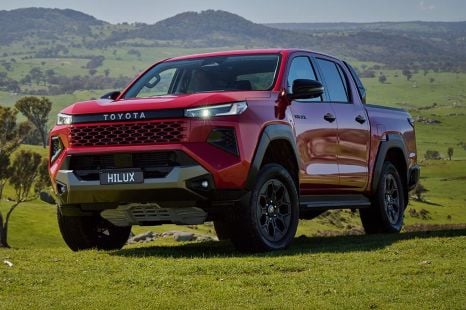

Damion Smy
New-generation Toyota HiLux won’t be a best-seller, says Toyota
5 Hours Ago
The old Ford Ranger Raptor was the daddy of dual-cabs, but always felt held back by its engine. The new one is the daddy... period.
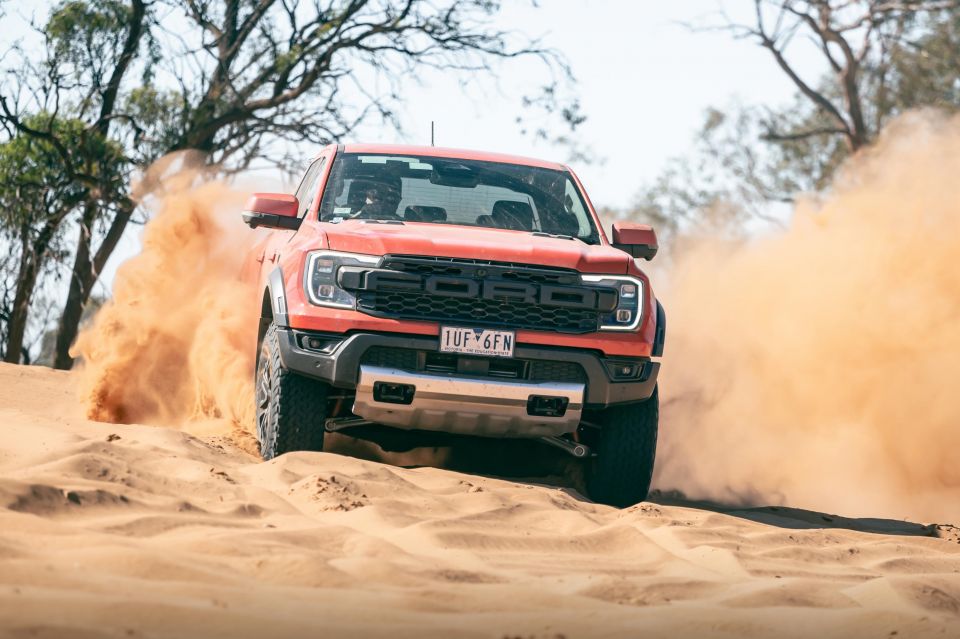
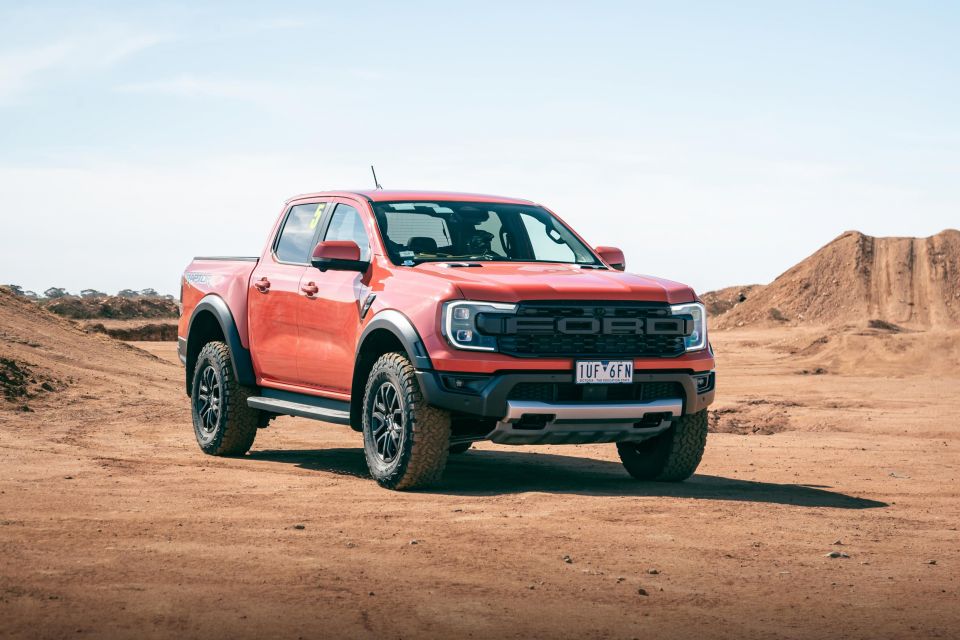

Quickly see how this car stacks up against its competition. Select any benchmark to see more details.
Where expert car reviews meet expert car buying – CarExpert gives you trusted advice, personalised service and real savings on your next new car.
The Ford Ranger Raptor is back, bigger and better than ever.
The first-generation Raptor set a new standard for off-road performance from a production ute in Australia, but there was always an elephant in the room.
Its 2.0-litre diesel engine was an impressive technical achievement, but never packed the performance we expected from a Ford Performance product. The rest of the Raptor was an instant winner in the high-vis one-upmanship stakes,but the engine was never more than adequate.
For all its talk about how well-suited the diesel engine in the last Raptor was to the job, Ford has reversed course for the second-generation car.
According to Justin Capicchiano, Ranger Raptor program supervisor, customers loved the last car but wanted “more Raptor” in the new model.
“The way to do that was to change the powertrain around,” he told CarExpert.
Ford has said bye bye Bi-Turbo and slotted a twin-turbocharged petrol V6 beneath the bonnet for more noise and more go, complete with a variable exhaust designed to sing a tune modelled on some of the industry’s most sonorous bent-six engines.
Beyond the headline change, most of the details are new on the 2023 Raptor. The suspension has been overhauled, the electronics are smarter, and the steering setup is bespoke relative to the rest of the Ranger line-up.
The current Raptor was already the daddy in its class, but the new model moves the game on again. It’s a beast.

The Ranger Raptor is offered in one spec, priced at $85,490 before on-road costs. That’s up $15,000 on the regular range-topper, the Ranger Wildtrak V6.
It’s also up on the $79,390 before on-roads you would have paid for a Raptor X at the end of the outgoing model’s life.
There’s no getting away from the fact that’s a lot of money for a Raptor, but you do get a lot of performance for your money…
Toyota’s most expensive HiLux is $70,200 before on-roads (the Rogue), although a new “Apex” variant will join the range in 2023 and potentially bump that up closer to the Raptor’s mark.
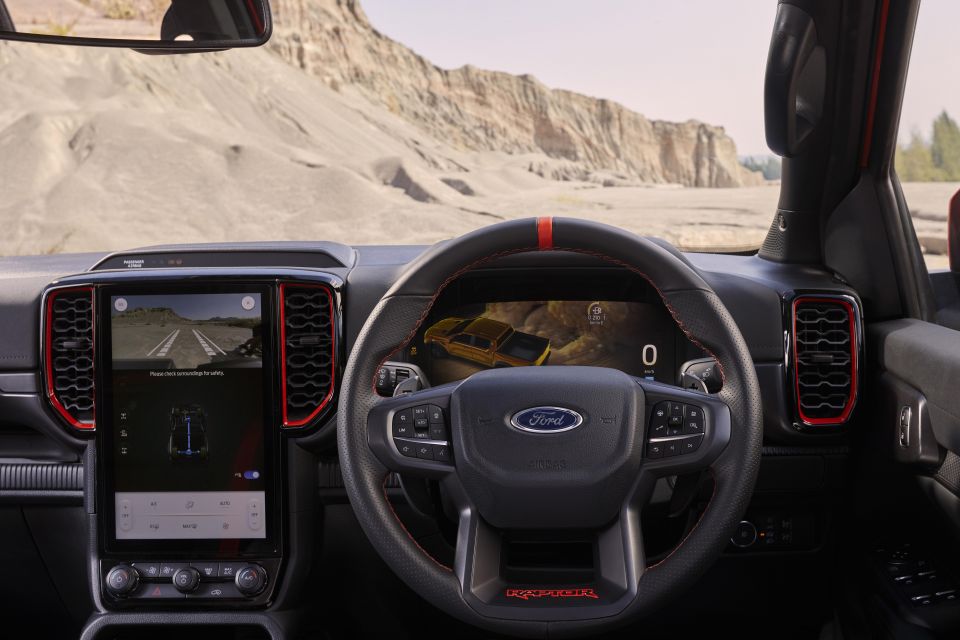
Buy your new car without the stress. It's fast, simple and completely free.

Great service from Travis and team, second time I have used this business would not hesitate to recommend them to anyone
Craig C.
Purchased a Ford Ranger in Sunshine Coast, QLD
CarExpert helped Craig save thousands on his Ford Ranger, now let us save you on your next new car.
Find a dealThe fundamentals in the Ranger Raptor are in keeping with what we’ve come to expect from the wider line-up, albeit with plenty of quality touches to emphasise its place atop the range.
The steering wheel is unique to the Raptor, and features magnesium paddles instead of the silly little shift buttons on the shifter in the Wildtrak, while the seats hold you more tightly than the standard units.
They’re excellent, striking what seemed like the right balance between bolstering and long-haul comfort on our launch drive. Coupled with the tilt and reach adjustable wheel, they make the Raptor one of the most comfortable utes money can buy.

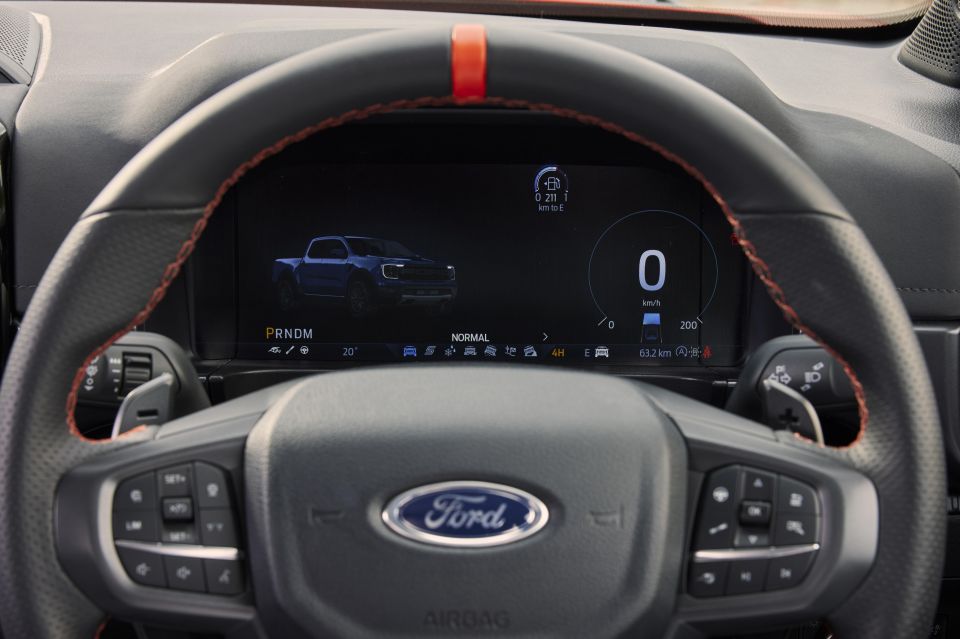
Along with the seats and wheel, there are plenty of flashes of the new Code Orange hero colour spread throughout the cabin. It’s been used for the vents, stitching, and Raptor logo at the base of the steering wheel, and nicely matches the more out-there character of the latest car.
The vertical touchscreen in the Ranger is streets ahead of what you get in any other dual-cab ute. The menu structure is logical, and the sheer amount of screen real estate means key information isn’t buried. It’s possible to have your mapping, radio preferences, and climate information on display all at once, for example.
The wireless Apple CarPlay connected flawlessly, although it drains the battery rapidly if you aren’t hooked up to the wireless charger. When you’re off-road, it features a few screens to show which mode you have selected and how the car is set up, along with two camera views making it easier to place what’s quite a wide car in tight spaces.
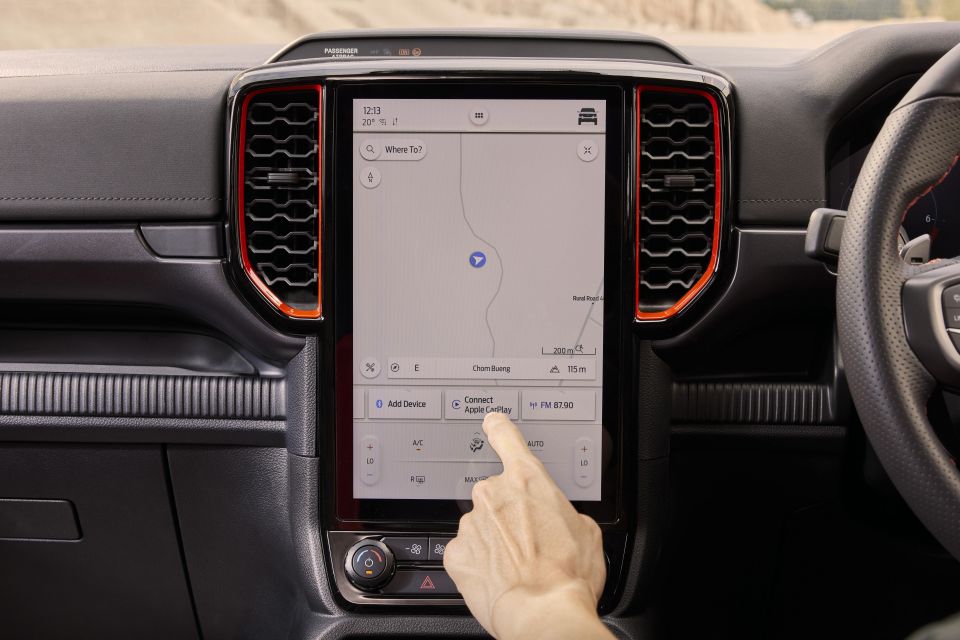

A bit more processing power still wouldn’t go astray though; the screen sometimes lags when you’re hopping between functions.
FordPass Connect is standard on the Raptor (as it is range-wide), and allows owners to lock or unlock and remotely start their car, check fuel levels, find the car, activate the exterior lighting, or even check the indicators on their trailer are working.
Storage space around the cabin is plentiful. The central bin is deep, the door pockets have plenty of room, there are two cupholders on the transmission tunnel, and the slot beneath the dashboard is huge. The slot ahead of the gear selector is perfect for a large McDonalds fries – no chip crisis here, provided you don’t spill them with the extra V6 grunt on tap.
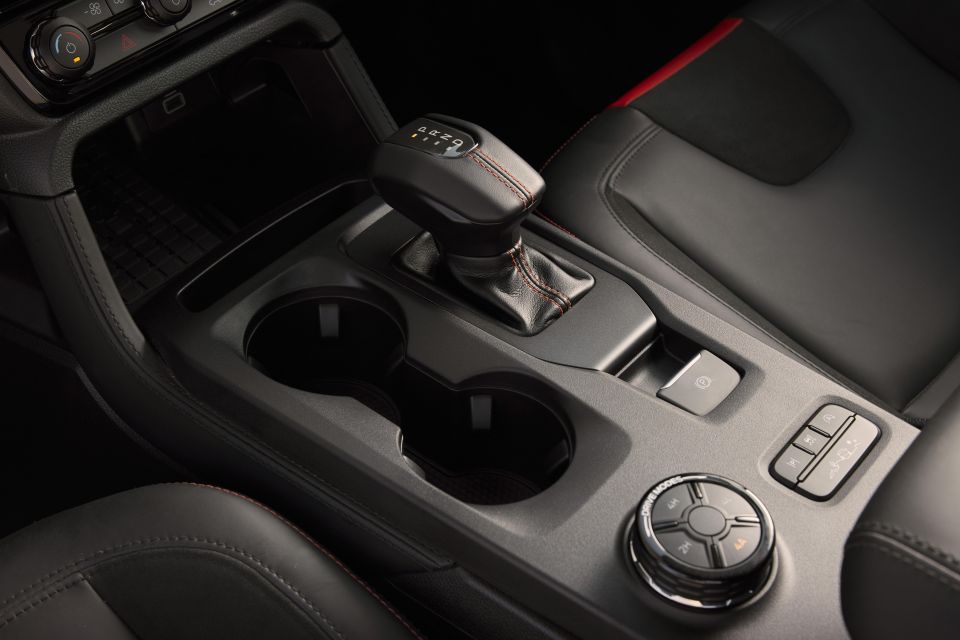
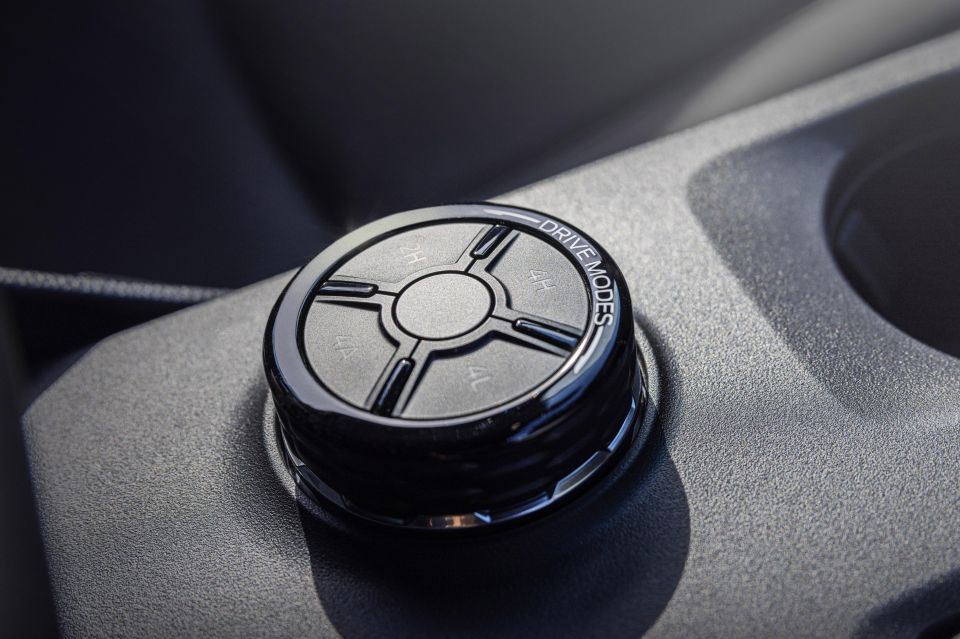
Rear seat space is fine, but doesn’t feel like much of a step on from what was previously on offer. What is new is the bench, which has been reshaped relative to the rest of the line-up to offer more support to outboard occupants for when the driver starts
Leg- and headroom are both acceptable, and the bench is broad enough that three tradies will be able to travel on short journeys without wanting to kill each other afterwards.
The inclusion of air vents is good, as is the fold-down central armrest with cupholders. It’s handy for long road trips, and for keeping warring kids apart.
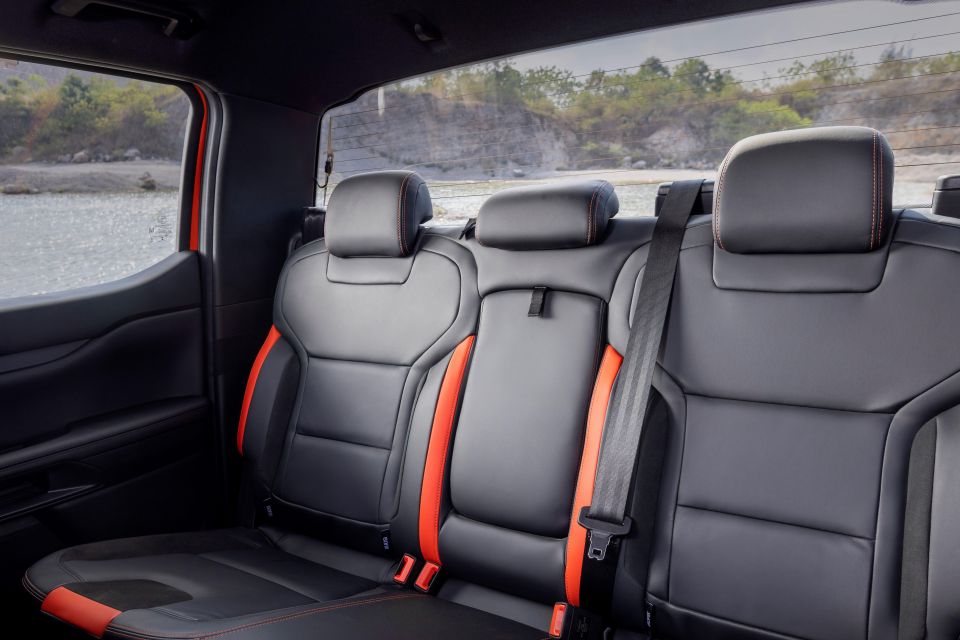
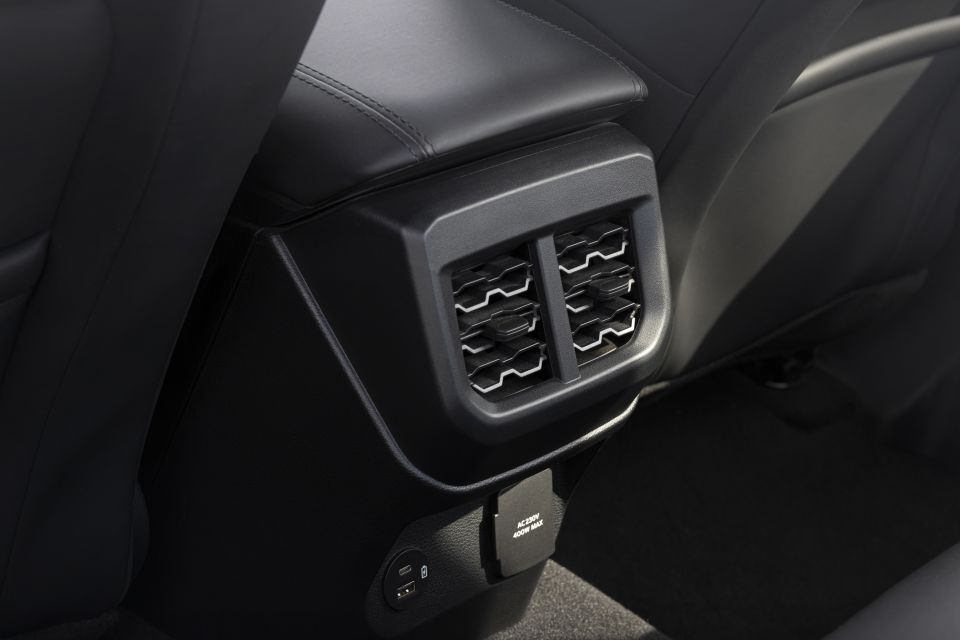
The Code Orange flashes from the front carry over to the rear, and the materials back there feel quite plush. Rather than a place for annoying apprentices, it feels like a spot to stash pampered children.
Along with the requisite ISOFIX and top-tether child seat points, the Ranger features a fold-down central armrest, damped rear grab handles, and storage bins beneath the seat bases.
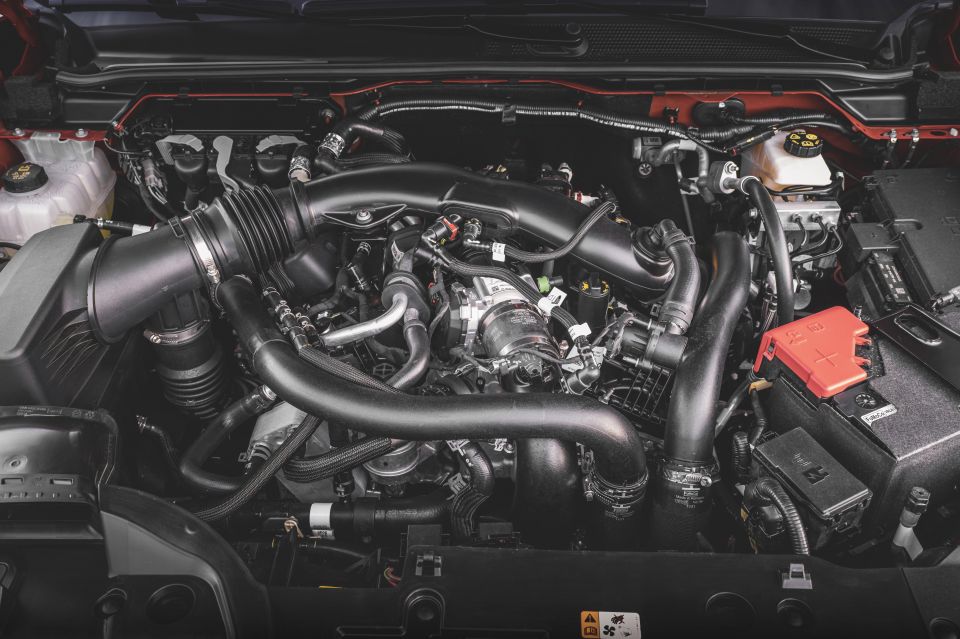
Say goodbye to the Bi-Turbo, and hello to the new Nano V6.
Power in the new Ranger Raptor comes from a 3.0-litre turbocharged V6 making 292kW and 583Nm, sent to all four wheels through a full-time four-wheel drive system.
Part of the Nano family of engines within Ford, the 3.0 is loosely related to the 2.7-litre unit featured in the Bronco in the USA – with the emphasis on loosely, given it features a different block, head, and camshafts.
It’s more closely related with the 3.0-litre in the Bronco Raptor, although even that has a different air box and exhaust system.
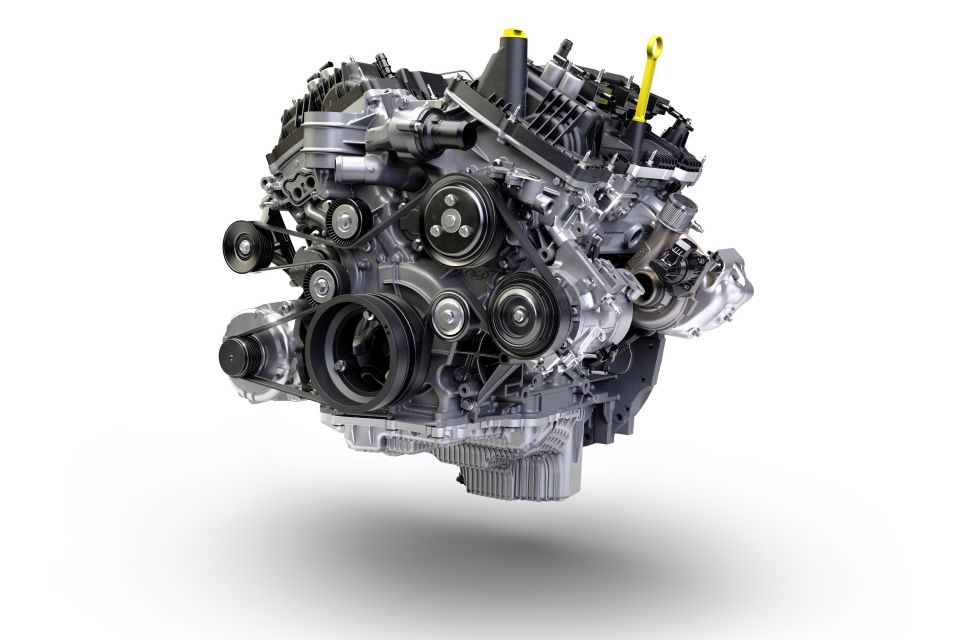
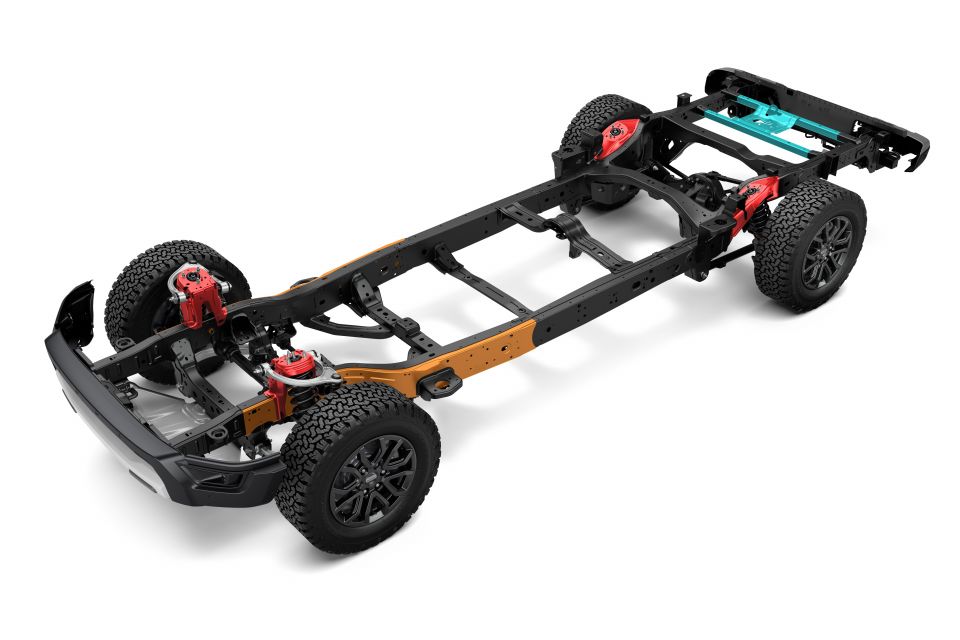
Claimed fuel economy is 11.5 litres per 100km, and the Raptor drinks premium unleaded. An 80L fuel tank is standard, and at launch ARB won’t have a long-range option – although it’s likely one will be offered soon enough.
The four-wheel drive system in the Raptor is capable of operating in conventional 2H, 4H, and 4L modes, along with a 4A setting that lets you operate with all-wheel drive on sealed surfaces. Like the wider Ranger line-up, it has a locking rear differential. Unlike the wider Ranger line-up, it also has a locking front differential.
Ford says the car is designed to flatter amateurs and challenge experts, so there’s a range of off-road assists on offer. Rock Crawl, Sand, Mud/Ruts, and Baja each pre-configure the car’s systems for a certain type of terrain, while Trail Control will keep the car at a set speed between 2.0km/h and 32km/h like cruise for when you’re off the beaten track.
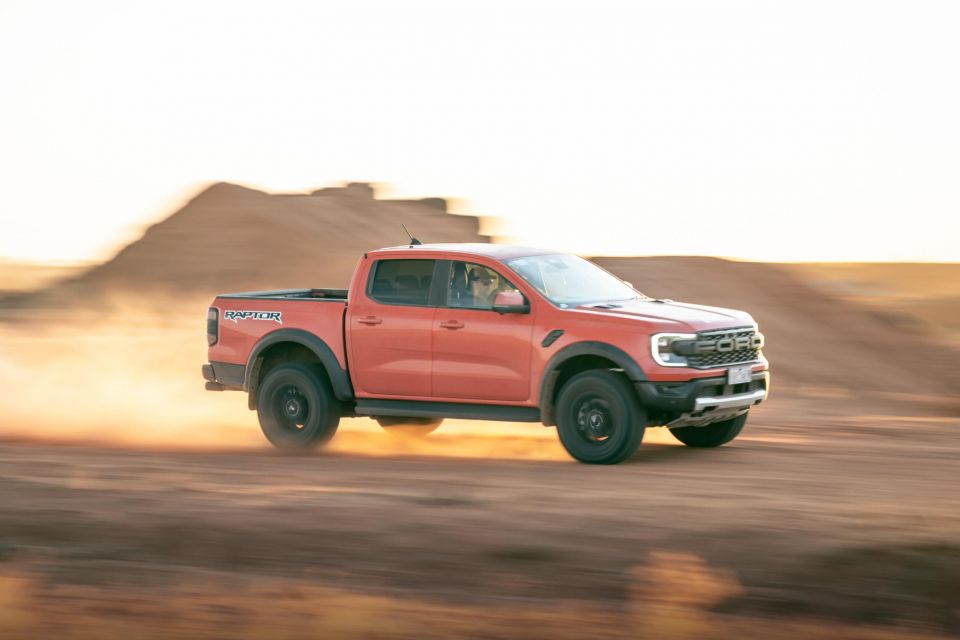
The old Raptor floated over the sort of rutted, ruined surfaces that’d have other utes crawling without breaking a sweat, and the new car is no different.
Along with some low-speed off-roading (we’ll get there), the Blue Oval set up a short special stage comprising gravel, mud, dirt, and a jump. The old Raptor – on hand to provide a baseline – floats around the lap, but it’s almost silent all the way, and the doughy throttle means you need to plan your inputs if you want to agitate it.
The new car is a totally different animal. For starters, you can hear it from miles away with the exhaust in Baja Mode. Ford says Baja is for “Off-Road Use Only”, but it’s off-road only in the same way that family lasagne you inhaled last night serves four.
Customisation is at the core of what Ford has tried to do with the Raptor. Each drive mode tweaks the calibration of the ABS, stability control, exhaust, and the steering and throttle setups, along with the drivetrain, and can be further adjusted by the driver as they desire.
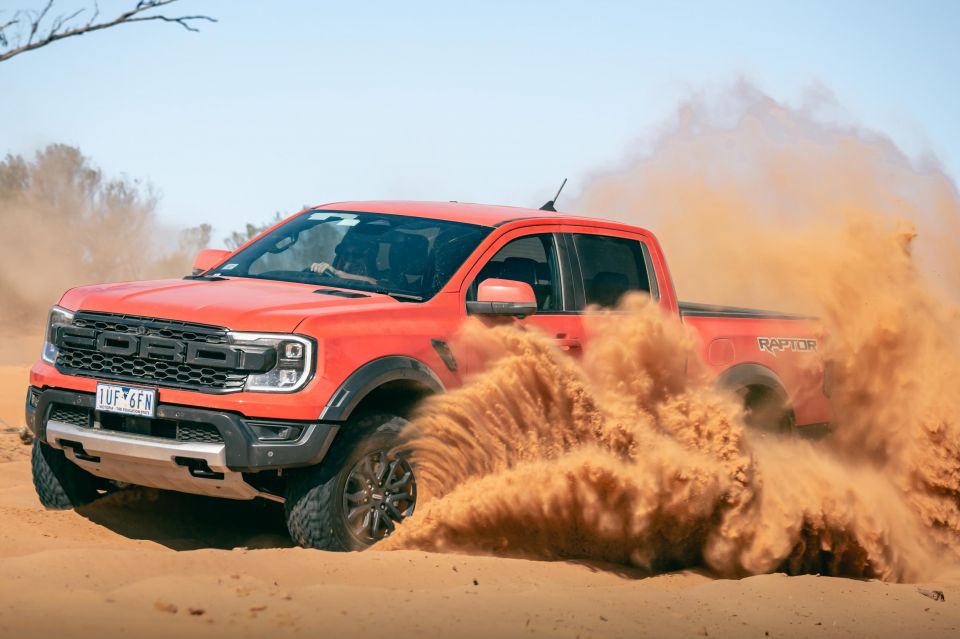
That means, for example, you can have the car in its raciest Baja Mode with stability and traction control turned off, with the four-wheel drive system in 2H and the rear differential locked to turn the Raptor into a two-tonne, dual-cab drift machine.
In Baja Mode (electric assists set up for maximum attack), the new Raptor feels playful and alive in a way the old car just doesn’t. It accelerates hard through the lower gears, pinning you back in the seat in a way that’ll feel familiar to hot hatch owners, and the throttle response is in another league.
With stability control switched completely off it feels even more playful. On gravel you’re able to trail brake into corners and have the back end hanging out, and then pick up the throttle and carry on the slide with the exhaust barking furiously away in the background.
Lift off and the tricky anti-lag system keeps the turbocharger spinning for three seconds, so when you get back on the loud pedal there’s none of the momentum-sapping lag you might expect when you step off to tuck the nose in. You can hear the system popping away, firing air into the turbo, from the outside.
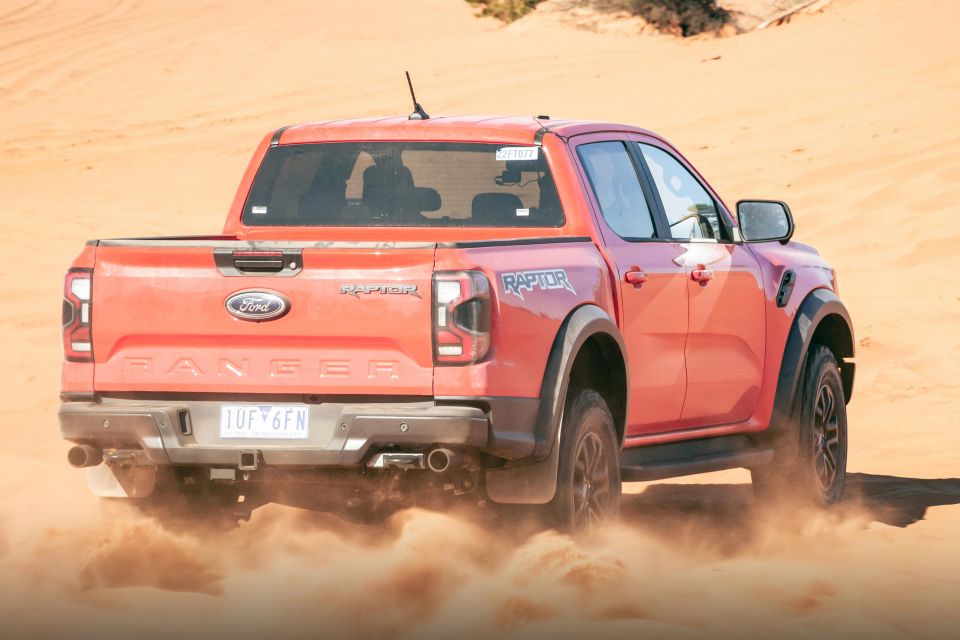
The long wheelbase combines with steering that’s quicker and more precise than on the last car to make the Raptor a big teddy to catch when it starts sliding. With a bit of confidence you can have it pivot gracefully between corners and start linking slides at speed, which is hilarious in a two-tonne ute. And yes, it’ll jump.
Where most dual-cab utes fall over their outside front wheel when you tip them into a corner, the front end of the Raptor feels dialled in. The combination of that steering, which comes courtesy of a beefed-up EPAS motor, and the sophisticated suspension gives the Raptor a feeling of balance you won’t find elsewhere in the ute world.
It isn’t a disappointment at lower speeds. The Raptor waltzed through the same off-road course we drove in the Everest, dragging itself up muddy slopes and cruising through boggy ruts without breaking a sweat.
Its wider track and more sophisticated Fox suspension mean it floats over lumpy ground with what feels like a level body, and the knobby tyres claw more confidently into muddy surfaces. The mechanical hardware is all top-notch, as you’d expect, but there’s also the electronic smarts on hand to get the most out of them.
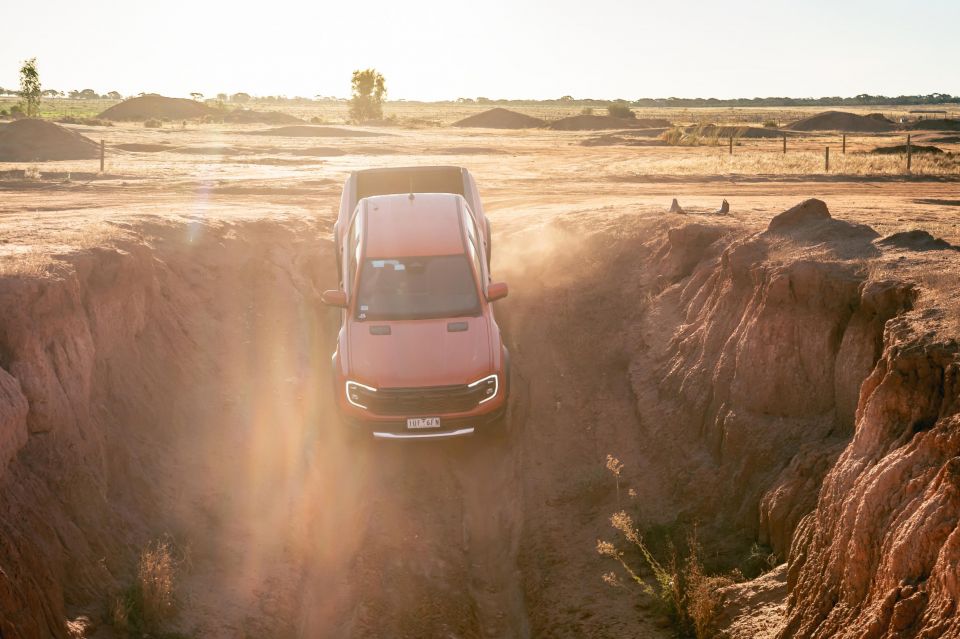
Trail Control, for example, allows you to set a speed and have the car maintain it while you focus on steering. It does the same job as Hill Descent Control down slippery inclines, where it keeps an iron grip on the car’s momentum, and kept the car steady over some tricky offset moguls.
Of course, sometimes there’s no substitute for a generous stab of throttle. Ford says the new Raptor has “the ability to gain momentum” in a way its predecessor didn’t, we’d say you can attack obstacles with more flair and less planning than before.
When you need to scale something steep and slippery the engine in the new Raptor has more in reserve than before, and the exhaust means you can enjoy pushing it in a way you just couldn’t with the muted four-pot in the last car.
Rather than a chore, it turns hard off-road work into a pleasure. Making the mundane or regular more enjoyable is the point of performance cars, and the Raptor delivers on that promise in a way most diesel utes just can’t.
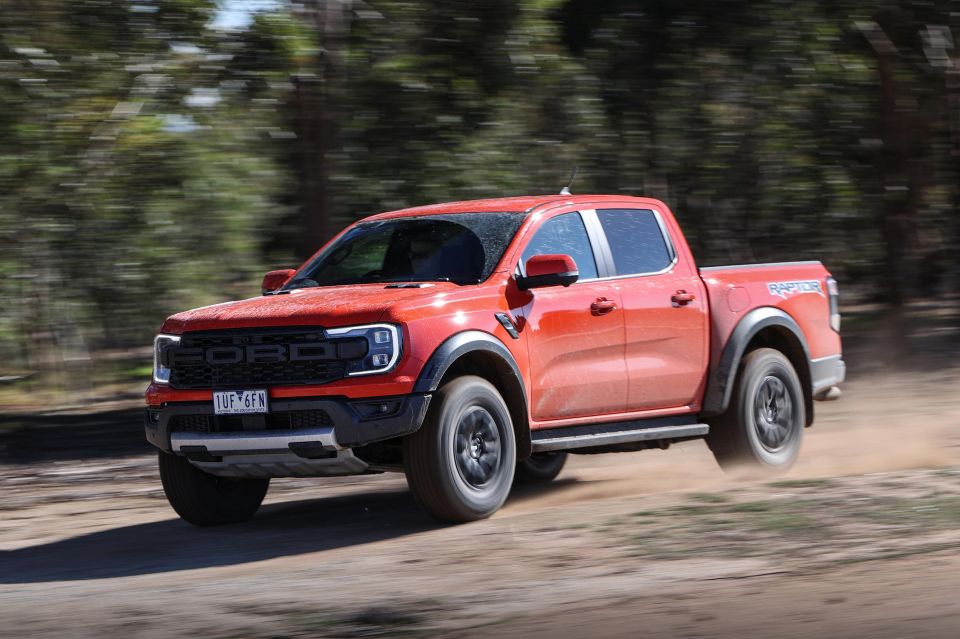
Where expert car reviews meet expert car buying – CarExpert gives you trusted advice, personalised service and real savings on your next new car.
As for on the road? It’s every bit as polished as you’d hope.
Our time on tarmac was limited, but based on our initial drive the car builds on its predecessor’s solid foundations with a magic carpet ride. Speed bumps, rough roads, kerbs, small animals… they all disappear without disturbing the body, which hovers along.
The more direct steering and impressive body control grant the Raptor the extra sense of purpose it previously lacked in more mundane driving.
The Fox Live Valve Internal Bypass shocks are capable of actively adjusting their behaviour based on where they are in their travel, and deliver exceptional body control in conjunction with a relaxed, long-travel feel when you need it. It’s not an easy thing to do.
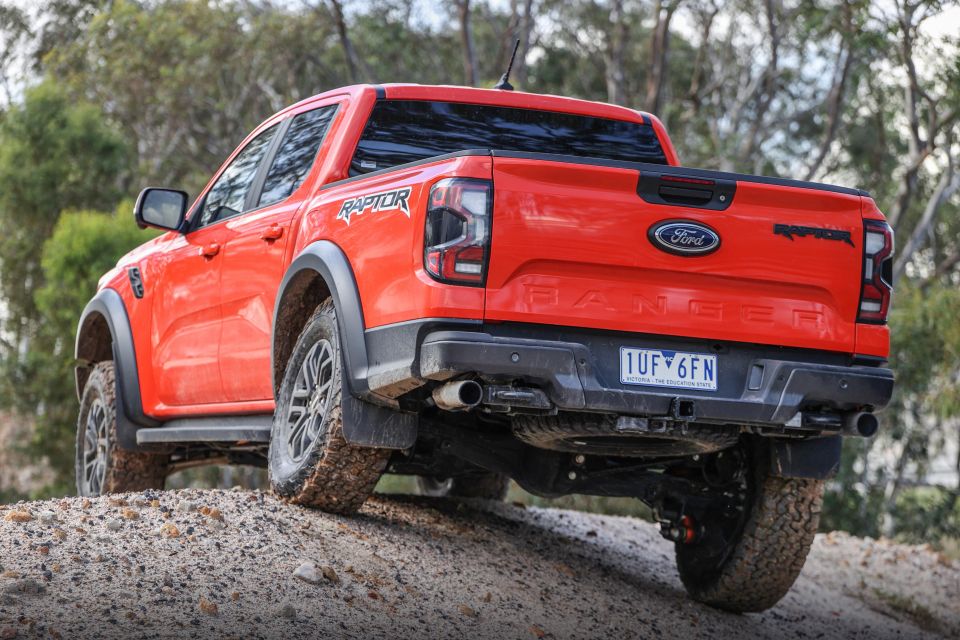
Noise suppression is excellent considering the huge tread blocks on the BF Goodrich tyres, and the driver assists appear to be calibrated well, meaning you can lean on them to make long drives easier. Notably, the Raptor finally gets adaptive cruise control.
The Raptor isn’t perfect. For one, its 2500kg braked towing capacity is down 1000kg on what you get in a Wildtrak, and the 717kg payload won’t satisfy those who need their ute to do heavy-duty work. Those are the compromises you have to make with those Fox Shocks.
It’s also a certified big boy at 2028mm wide, considering a regular Ranger is 1918mm wide. That’s going to make it tougher to slot into city carparks, or to squeeze into supermarket parking spots. Thankfully there’s no danger of kerbing a rim.
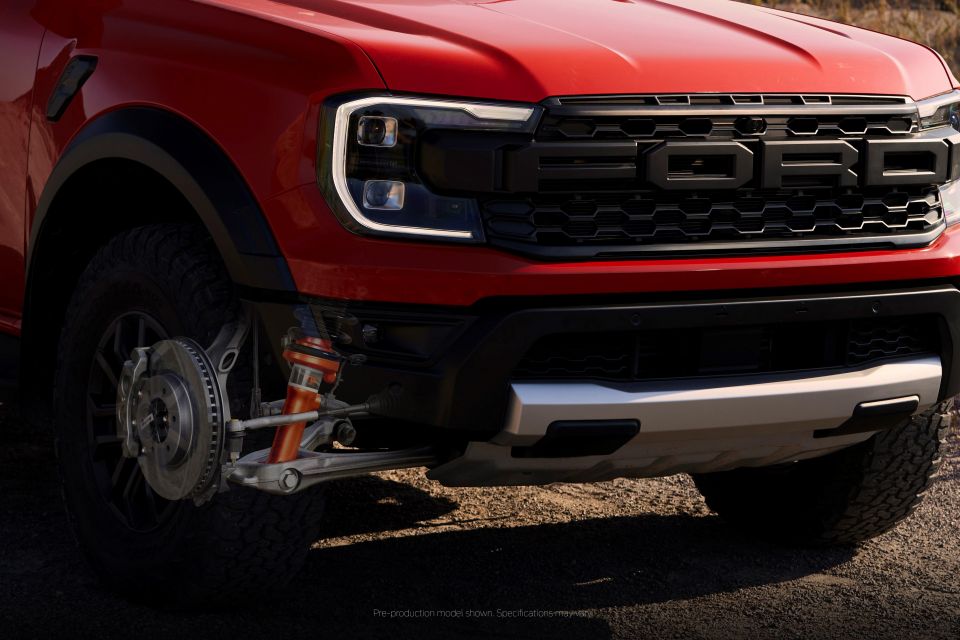

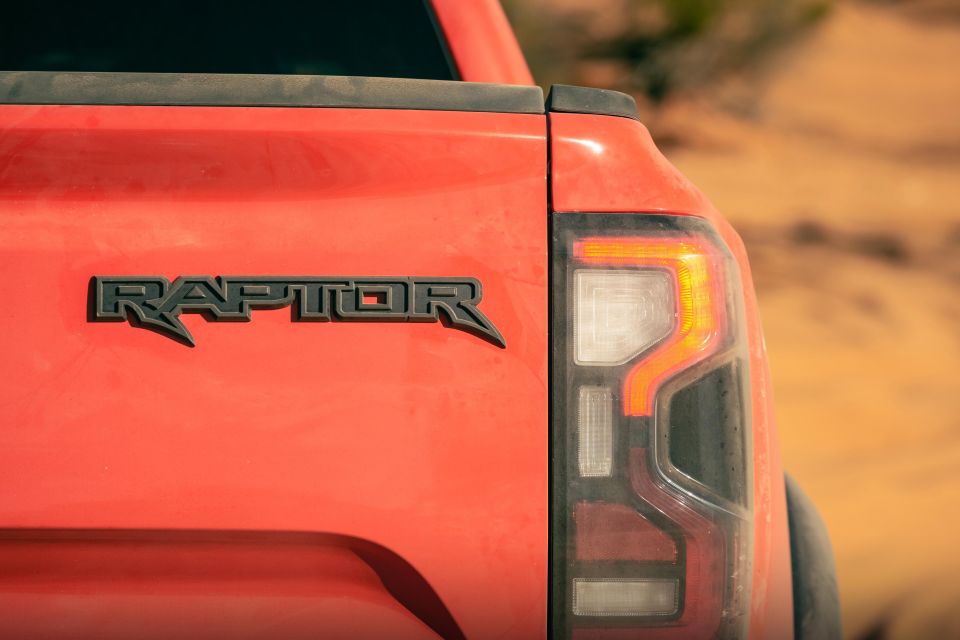

The Raptor exists in a different world to the regular Ranger line-up, so its equipment list looks a bit different. Standard kit includes:
That’s atop the following equipment, which is standard on the regular line-up.
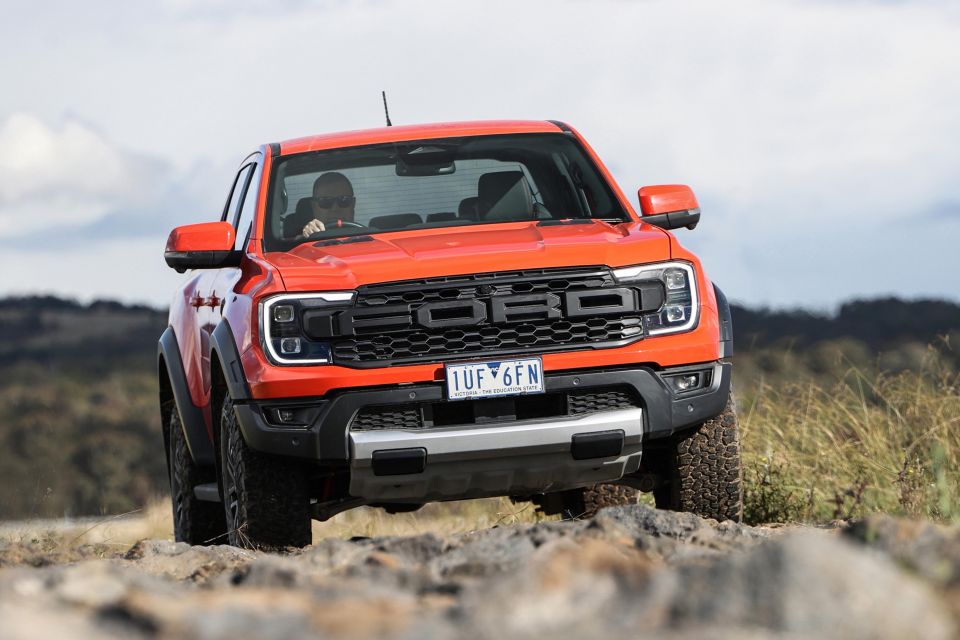
The last Ranger Raptor missed out on some of the active driver assists offered elsewhere in the line-up due to its unique design. That isn’t the case for the latest model.
The 2022 Ford Ranger Raptor comes with the following standard safety equipment:
The new Ford Ranger is yet to be crash tested by ANCAP, so it remains unrated. The outgoing model received a five-star ANCAP safety rating, but it was based on testing conducted in 2015.
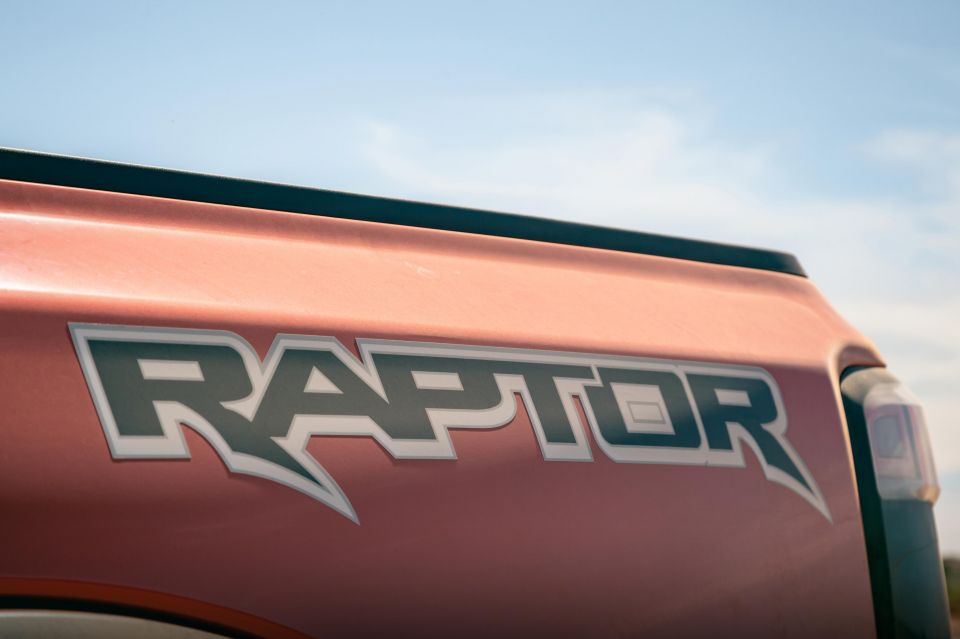
The Ford Ranger Raptor is backed by a five-year, unlimited-kilometre warranty.
It requires maintenance every 12 months or 15,000 kilometres, and the first five services will set you back $329 each under Ford’s capped-price service plan.

The old Ranger Raptor was technically impressive, but its engine never lived up to the promise of its swollen arches, stickers, and Ford Performance branding.
The new car rights those wrongs, emphatically.
It’s more capable off-road and more polished on it, but that was almost a given based on the way the regular Ranger drives. The big surprise is how much fun the Ford Performance team has managed to extract from a dual-cab ute.
The extra power, torque, and noise on offer from the 3.0-litre V6 engine turn the Raptor into a car that feels alive almost all the time.
The next-generation car is more enjoyable to push off-road, where it’ll climb every mountain and ford every stream with a bit more flair, and you can play with it like an overgrown rally car on loose surfaces. On the road it has the same indomitable feeling as before, but there are extra layers to its character thanks to the engine and exhaust.
Will most owners ever come close to tapping the massive potential baked into the new Raptor? Probably not. But you don’t need to dig deep into its impressive suite of capabilities to know you’re driving something special.
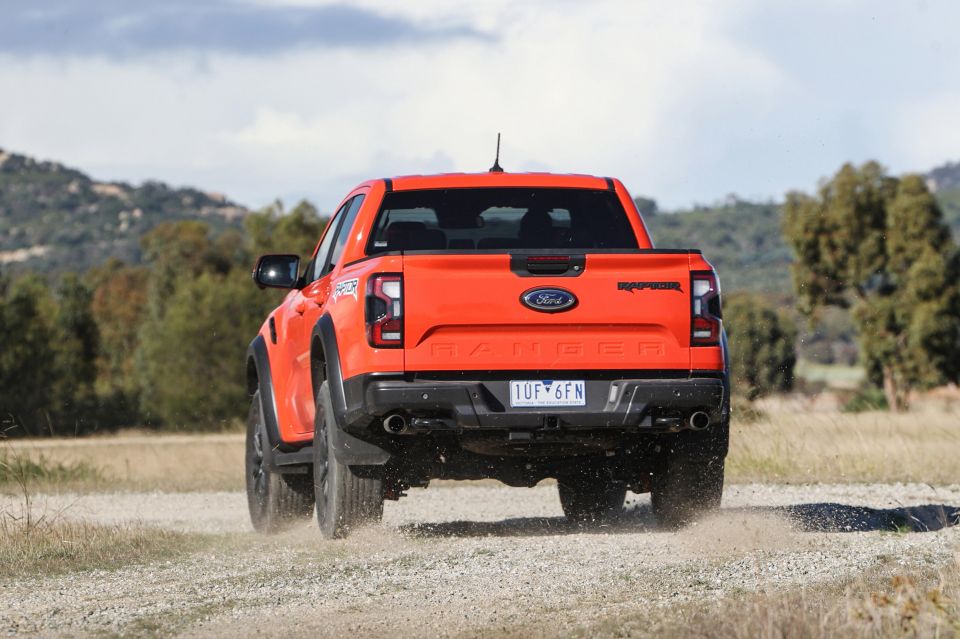
MORE: Everything Ford Ranger
Where expert car reviews meet expert car buying – CarExpert gives you trusted advice, personalised service and real savings on your next new car.
Scott Collie is an automotive journalist based in Melbourne, Australia. Scott studied journalism at RMIT University and, after a lifelong obsession with everything automotive, started covering the car industry shortly afterwards. He has a passion for travel, and is an avid Melbourne Demons supporter.


Damion Smy
5 Hours Ago
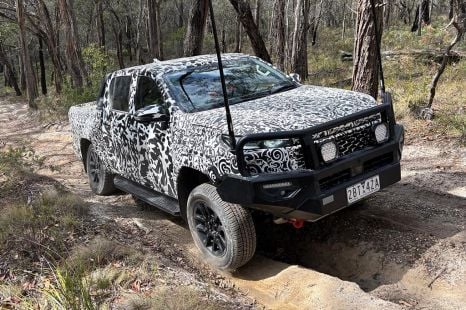

Damion Smy
5 Hours Ago
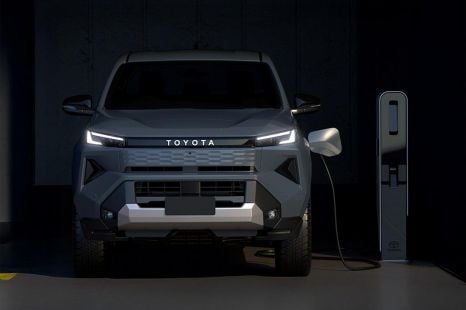

Damion Smy
5 Hours Ago
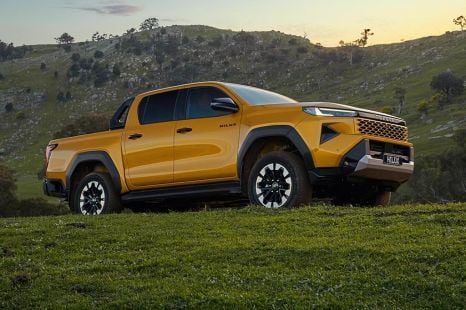

Damion Smy
5 Hours Ago
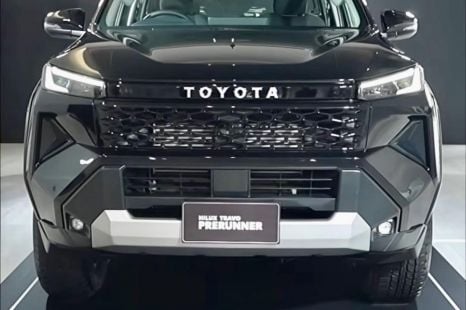

Ben Zachariah
9 Hours Ago


William Stopford
2 Days Ago